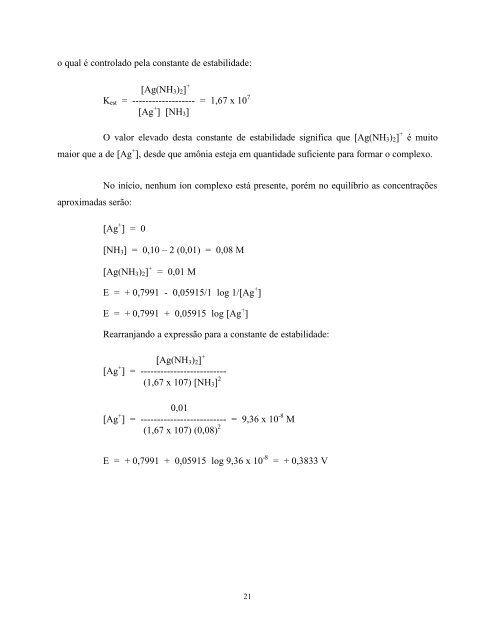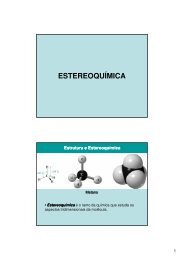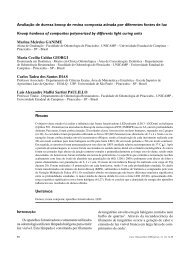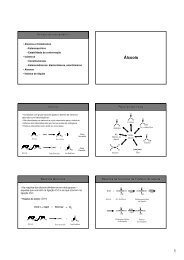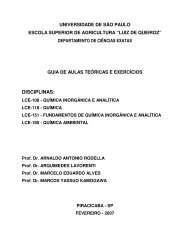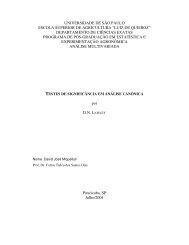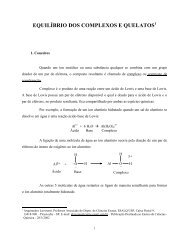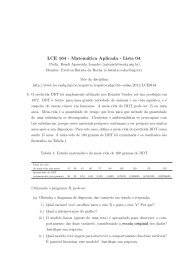Equilíbrio da oxidação e redução - Departamento de Ciências ...
Equilíbrio da oxidação e redução - Departamento de Ciências ...
Equilíbrio da oxidação e redução - Departamento de Ciências ...
You also want an ePaper? Increase the reach of your titles
YUMPU automatically turns print PDFs into web optimized ePapers that Google loves.
o qual é controlado pela constante <strong>de</strong> estabili<strong>da</strong><strong>de</strong>:<br />
[Ag(NH3)2] +<br />
Kest = ------------------- = 1,67 x 10 7<br />
[Ag + ] [NH3]<br />
O valor elevado <strong>de</strong>sta constante <strong>de</strong> estabili<strong>da</strong><strong>de</strong> significa que [Ag(NH3)2] + é muito<br />
maior que a <strong>de</strong> [Ag + ], <strong>de</strong>s<strong>de</strong> que amônia esteja em quanti<strong>da</strong><strong>de</strong> suficiente para formar o complexo.<br />
aproxima<strong>da</strong>s serão:<br />
No início, nenhum íon complexo está presente, porém no equilíbrio as concentrações<br />
[Ag + ] = 0<br />
[NH3] = 0,10 – 2 (0,01) = 0,08 M<br />
[Ag(NH3)2] + = 0,01 M<br />
E = + 0,7991 - 0,05915/1 log 1/[Ag + ]<br />
E = + 0,7991 + 0,05915 log [Ag + ]<br />
Rearranjando a expressão para a constante <strong>de</strong> estabili<strong>da</strong><strong>de</strong>:<br />
[Ag(NH3)2] +<br />
[Ag + ] = --------------------------<br />
(1,67 x 107) [NH3] 2<br />
0,01<br />
[Ag + ] = -------------------------- = 9,36 x 10 -8 M<br />
(1,67 x 107) (0,08) 2<br />
E = + 0,7991 + 0,05915 log 9,36 x 10 -8 = + 0,3833 V<br />
21


